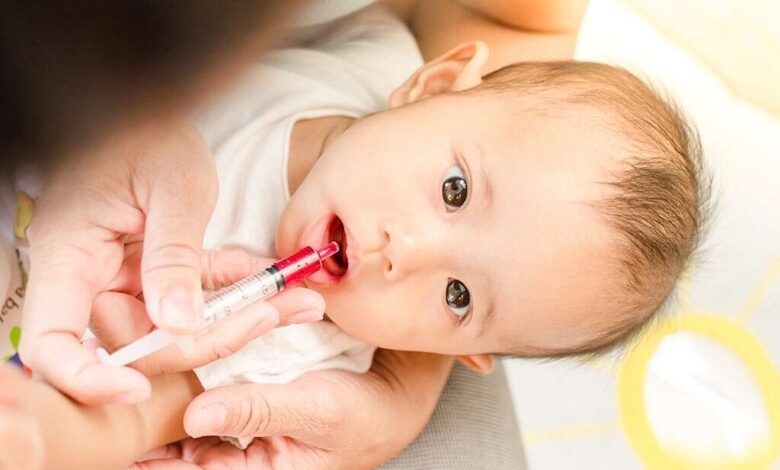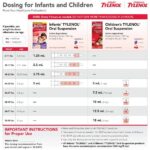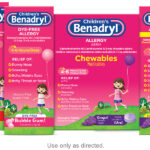How To Avoid Mistakes When Giving Medicines to Children

Medicines for children come in different forms. Tablets, caplets and liquid medicines are given orally (by mouth). There are medicines that are used in the eye, ear or nose, and inhalers for asthma medicines. Other medicines, such as suppositories or enemas, are given rectally (in the back passage, or bottom).
Giving kids medicine safely can be complicated. And many parents feel the pressure when a young child needs a medicine, knowing that giving too much or too little could cause serious side effects. Using medicines safely means knowing when they’re needed and when they’re not. Always check with your doctor if you’re not sure.
How can parents avoid mistakes when giving children medication?
There is a tendency for parents to give young children too much medicine. The reason for this is their low body weight. Also, the marks on dispensers may be confusing, or the information found on package inserts may not be easy to understand. Children are especially likely to get too much medicine if it’s given in the form of a liquid, such as liquid antibiotics, painkillers or cough syrup. This can have serious health consequences. But there are a few things parents can do to prevent mistakes from happening when giving children medication:
- Package insert: Carefully read through the package insert and follow the recommendations.
- The correct dosage: Pay special care to how much medicine you have to give, and check the amount three times to be sure before you give the first dose: It must be suitable for the child’s age and weight. Placing children on a scale is safer than estimating their weight.
- When it is to be used: Follow the instructions on how to use the medication – for example, use enough water when the child swallows a tablet and check whether it needs to be taken before, with or after a meal.
- Dispensers: Any dispensers that are included in the packaging should be used. Droppers, dosing caps or measuring cups are the most commonly included types of dispensers. Dispensers are only suitable for the medication that they came with, not for any others. If the dosing instructions specify a “spoonful,” check whether they mean a teaspoon or a tablespoon. The size of these spoons can vary a lot though. The standard measurement is usually 5 ml for a teaspoon, and 15 ml for a tablespoon. Instead, use disposable syringes available from the pharmacy to measure liquid medicines – this can be especially helpful when giving medication to infants.
- Lighting: Make sure there is enough light when measuring the dose of medication, and always turn on a light when doing this at night.
- Reminders: Put a sticker or slip of paper on the bottle of medicine and make a note whenever you give the child a dose. This is especially important if the medicine is needed several times a day and specific times need to be followed, or if the medicine is given to the child by different people at different times.
- Over-the-counter medication: Also carefully read the instructions for medication that can be bought over the counter. If you aren’t sure about whether the medication is suitable for children, seek advice from a doctor or ask at the pharmacy. This is especially important if no dose recommendations can be found for the weight or age of the child or the child is taking other medicine at the same time.
- Original packaging: Do not pour drop solution into another bottle or dilute them. Doing this could change the size of the drop, which affects the dose.
- Seek advice for dosing errors: In the event of accidental overdose, contact a doctor or pharmacist and get advice on what should be done. If one of the doses was forgotten, the child vomited after taking the medication or spit out part of it, don’t give a double dose the next time just to “even things out.” Instead, follow the usual schedule, but also seek advice.
Some medications may not be crushed or broken into smaller pieces, and mixing them with food can also cause problems.
If you feel unsure about any of these things or have other questions, it is a good idea to consult a doctor or pharmacist.
What to Know
To safely use prescription or over-the-counter (OTC) medicines, talk with your doctor or pharmacist before giving them to your child.
When giving your child medicines, you’ll need to know:
- the name and purpose of the medicine
- how much, how often, and for how long the medicine should be taken
- how the medicine should be given. For example: taken by mouth; breathed into the lungs; inserted into the ears, eyes, or rectum; or applied to the skin
- any special instructions, like whether the medicine should be taken with or without food
- how the medicine is stored
- how long the medicine can be stored safely before it needs to be discarded
- common side effects or reactions
- interactions with other medicines your child takes
- what happens if your child misses a dose
Other things to know:
Because the dosages of prescription and OTC medicines depend on a patient’s weight, make sure the doctor and pharmacist have updated information about your child’s weight and age. Too little medicine can be ineffective and too much could be harmful. Also, different medicines have different concentrations of ingredients. So always check the bottle and ask the pharmacist if you have questions.
Make sure the doctor and pharmacist know if your child has any allergies or takes other medicines regularly.
Sometimes, medicines are given on an as-needed basis such as for pain or discomfort. OTC drugs that relieve symptoms like aches, pains, or fever (like acetaminophen and ibuprofen) should be used as your doctor recommends.
Do not give cough or cold medicines to your child unless the doctor says it’s OK, especially to kids under 6 years old. These products offer little benefit to young children and can have serious side effects. Many cough and cold products for children have more than one ingredient, which might increase the chances of accidental overdose if taken with another medicine.
Always talk to your doctor first to be sure an OTC medicine is safe for your child.
Many prescription medicines should be taken until finished as prescribed by the doctor — even if your child feels better before that. For example, antibiotics kill bacteria , so it’s important to finish all doses even after symptoms stop. Otherwise, the infection could come back.
Aspirin Alert!
Never give aspirin to kids, especially during viral illnesses. Using aspirin during an illness caused by a virus (such as the flu, chickenpox, or an upper respiratory infection) can cause Reye syndrome. This potentially life-threatening disease can cause nausea, vomiting, and extreme tiredness that progresses to a coma.
Some OTC medicines (including some that treat headache and nausea) contain aspirin. So always read labels and check with your doctor or pharmacist before using them. Also, some aspirin-containing medicines use words other than aspirin, such as salicylate or acetylsalicylate. Avoid those too.





